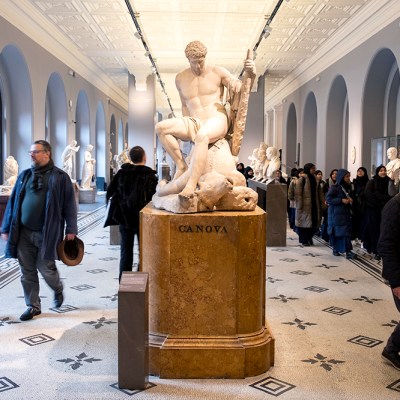From the June 2024 issue of Apollo. Preview and subscribe here.
In conversation with Louise Mirrer, president of the New-York Historical Society (NYHS), at TEFAF New York in May, we discussed an area of collecting that doesn’t often get much attention. It is the area that has come to be known, particularly in the UK, as rapid response collecting.
In the NYHS’s ongoing exhibition of works from its permanent collection – named, appropriately enough, ‘Objects Tell Stories’ – there is one display that stands out. It is dedicated to 9/11 and has a very different feel to the nearby exhibits that focus on other areas of history. I don’t think it is purely to do with the recentness of the subject matter. Teddy bears, US flags, missing persons posters – what might be called personal ephemera – are all exhibited. Placed together in a museum display case, the objects start to tell a bigger story, one that illuminates both individual and national perspectives. The display captures something of the spirit of that day and its aftermath. It makes something that took place 23 years ago feel more tangible.
These objects were gathered not after a nationwide appeal but by curators in the moment, very shortly after 9/11. Mirrer said that this collection was amassed because of the foresight of the then president of the NYHS, Kenneth T. Jackson. According to Mirrer, he told the team of NYHS curators on 12 September that it should be considered a normal working day. Members of the emergency services were working and the curators should too. It was their responsibility to gather material through which to commemorate and understand what had happened to New York.
The ‘9/11’ and ‘Fire’ display cases in the ‘Objects Tell Stories’ exhibition at the New-York Historical Society. Photo: Corrado Serra

It was an unusual call from a director of a museum – one which raises questions about how things are recorded in museums. Are curators the emergency services of history, working quickly in a moment of trauma to gather objects for future generations? Is there a risk of prioritising certain stories and overlooking others? How can curators know which stories merit the attention of collecting? Is immediacy more important than reflection? The latter questions are relevant elsewhere in the NYHS’s collection. The protest movement Occupy Wall Street seemed to be a nationally significant phenomenon; the curators went to Wall Street to collect flyers, stickers and materials associated with the protest. In time, however, the Occupy movement came to seem self-contained, rather than a moment that changed the course of history. The collection is still there for anyone who is interested.
In some ways, I can’t help but feel that it is just as important to gather things that aren’t associated with huge national events as to gather things that are. The reality is that a museum collection is only ever part of a story or history, and we rely on historians to fill in the gaps. But museums as repositories of stories, of a broad sort of national (or even international) memory – now that is something truly worth valuing. Otherwise, if we insist on documenting only narratives that we’re comfortable with, then all we do is reflect our own views, and who wants to go to a museum to look in the mirror? The important work that museums do can take a long time to appreciate but if the material isn’t there then what is left to reflect on?
From the June 2024 issue of Apollo. Preview and subscribe here.



